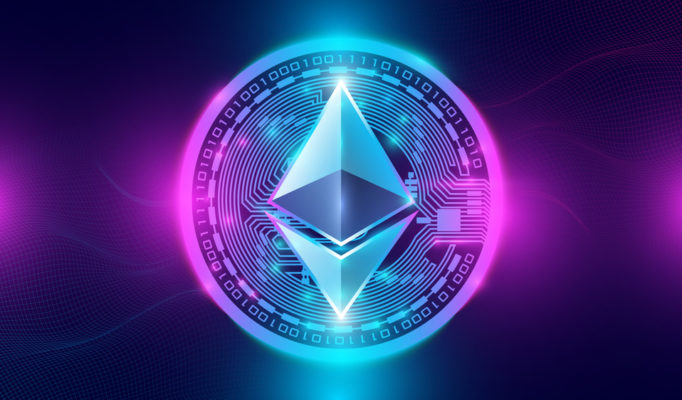Ethereum 2.0, also known as Serenity, is the next major upgrade to the Ethereum platform. It is commonly referred to by the name – Ethereum.
It is hoped that with the implementation of this update, Ethereum will be able to rectify a few of the security issues.
They have plagued Ethereum ever since it was first released in 2015. In this article, we will take a more in-depth look at Ethereum 2.0.
We will consider the consequences that it may have for the future of the Ethereum network.
The Ethereum network is going to undergo a massive overhaul in preparation for the launch of Ethereum 2.0.
This will bring a plethora of brand-new features and improvements.
The most significant change is moving away from a proof-of-work (PoW) consensus procedure and toward a proof-of-stake (PoS) consensus mechanism.
This suggests that Ethereum 2.0 would use verifiers rather than miners. Hence, the former will complete challenging mathematical computations in order to verify contracts.
These verifiers will be required to stake a certain number of Ethereum as security in order to verify contracts. Another fundamental component of Ethereum 2.0 is called a shard chain.
In this context, it means “the ability to partition the Ethereum blockchain into a number of more compact networks, each with its own consensus method”.
Because of this, Ethereum’s scalability will be significantly improved. Furthermore, it will be possible to carry out a greater number of operations concurrently.
The Significance of Ethereum 2.0
The Ethereum network has made considerable strides forward since it was first introduced in 2015. Yet, it continues to struggle with a range of issues related to scalability and security.
The primary issue is the rise in the price of individual transactions.
When there are more people using the network, it will cost more money to send and receive transactions.
This is because the current proof-of-work consensus process necessitates that miners must first solve difficult mathematical equations.
A significant amount of computer power is required for this. The situation has arisen due to this reason. The issue of security is still another one.
Even though the Ethereum network is one of the most secure in the world, there is still the possibility that it might be attacked.
There is a risk of a 51% assault. It is amongst a small number of miners that have control over more than half of the processing power of the network.
They are therefore able to double-spend bitcoin or block other miners from verifying transactions. This is the greatest vulnerability.
Ethereum 2.0 aims to solve these issues by implementing shard chains and a consensus process based on proof-of-stake.
The proof-of-stake mechanism will result in the network consuming significantly less energy, which will improve the network’s long-term viability.
Because of the shard chains, the scalability of the network will be improved. This will make it possible to process a myriad of operations in parallel.
The Technique to Deal with Ethereum 2.0
Proof-of-stake, a form of consensus protocol, serves as the foundation for Ethereum 2.0.
This indicates that Ethereum 2.0 will use verifiers rather than miners who do challenging mathematical equations to verify transactions.
Verifiers will be required to stake a certain number of Ethereum as security. They will be compelled to do so in order to validate transactions.
Increasing the amount of Ethereum that a validator has at stake increases the likelihood that they will be selected to confirm a transaction.
After being selected, a validator is tasked with performing a certain responsibility that is referred to as validating a block.
Before uploading the block to the Ethereum 2.0 network, it is necessary to check and confirm that all of the transactions included inside are valid.
After the insertion of the block, the validator will be given newly minted Ethereum as a reward.
The Advantages of Ethereum 2.0
Ethereum 2.0 has a number of benefits that will have a substantial impact on the Ethereum network, and these benefits include:
The implementation of shard chains. Basically, they will allow for an increase in the number of transactions that can be processed concurrently.
These will also lead to a major improvement in the scalability of the Ethereum network.
Because of its low energy consumption, the proof-of-stake consensus mechanism used in Ethereum 2.0 will reduce the amount of energy used by the network.
This will result in the network being more resilient. Enhanced security will guarantee that the proof-of-stake technique will simultaneously strengthen data security.
This will be accomplished by reducing the likelihood of a 51% attack occurring. On top of it, the proof-of-stake approach results in a greater degree of decentralization.
It follows from this that anybody can stake some amount of Ethereum in order to become a verifier. Due to this, the network will grow noticeably more decentralized.
Hence, it will increase its resistance to being controlled by a small subset of individuals/organizations.
Moreover, because of the growth in decentralization, there is better governance.
In addition, the Ethereum 2.0 upgrade will have a brand-new governance structure.
This will make it possible for the network to make choices in a more expedient and efficient manner.
The Drawbacks of Ethereum 2.0
There are problems that need to be fixed with Ethereum 2.0, just like there are problems that need to be fixed with each substantial upgrade.
The complexity of the upgrading is one of the primary challenges that must be overcome.
The Ethereum 2.0 update marks a significant paradigm shift for the network.
It needs to go through exhaustive testing in order for it to make progress and become fully distributed before it is totally implemented.
Another one of the challenges is the risk of a poor adoption rate.
Because Ethereum 2.0 is such a substantial improvement to the network, it is possible that some users will not be eager to switch to the new system.
This is because Ethereum 2.0 is a significant upgrade.
It is possible that this will cause a divide in the Ethereum community as well as a general decrease in the value of Ethereum.
The upcoming big upgrade to the Ethereum network is known as Serenity/Ethereum 2.0.
It intends to overcome some of the scale and privacy difficulties that have plagued Ethereum ever since it was first introduced in 2015.
These issues have been plaguing Ethereum since it was first introduced.
The upgrade will incorporate a variety of brand-new features and improvements.
One of the examples includes the transition from a proof-of-work consensus method to a proof-of-stake consensus mechanism.
This does not mean that there are no challenges that need to be conquered. The benefits of Ethereum 2.0 are significant and will have a significant impact on the Ethereum network.
An important step forward for the Ethereum network is being taken with the release of the Ethereum 2.0 update. This will also serve to establish the foundation for the future of Ethereum 2.0.

















